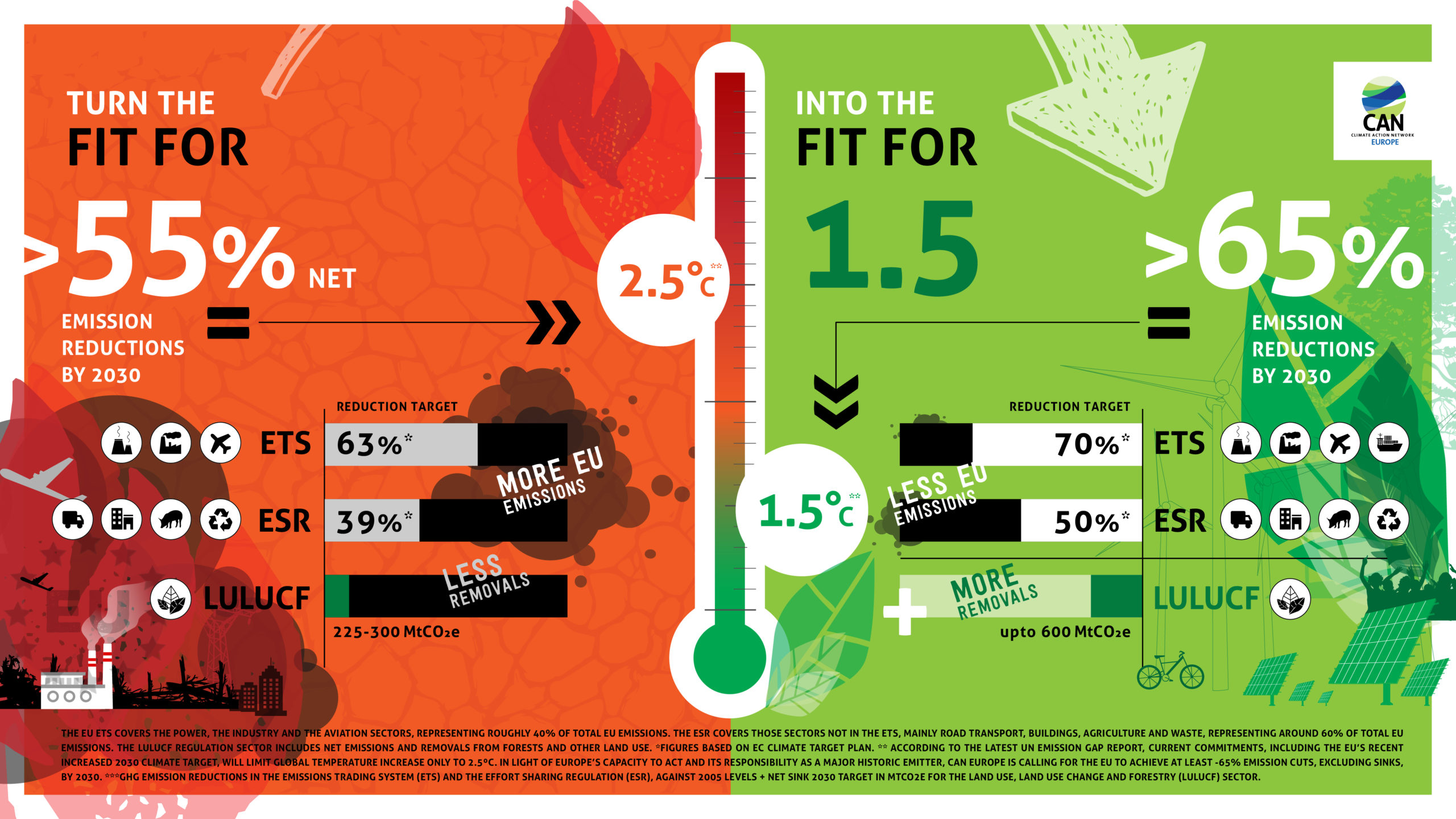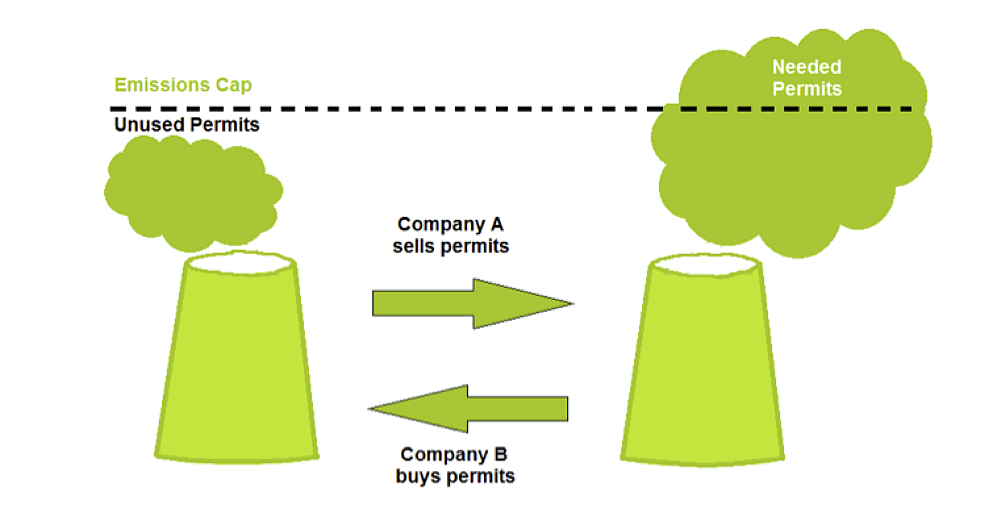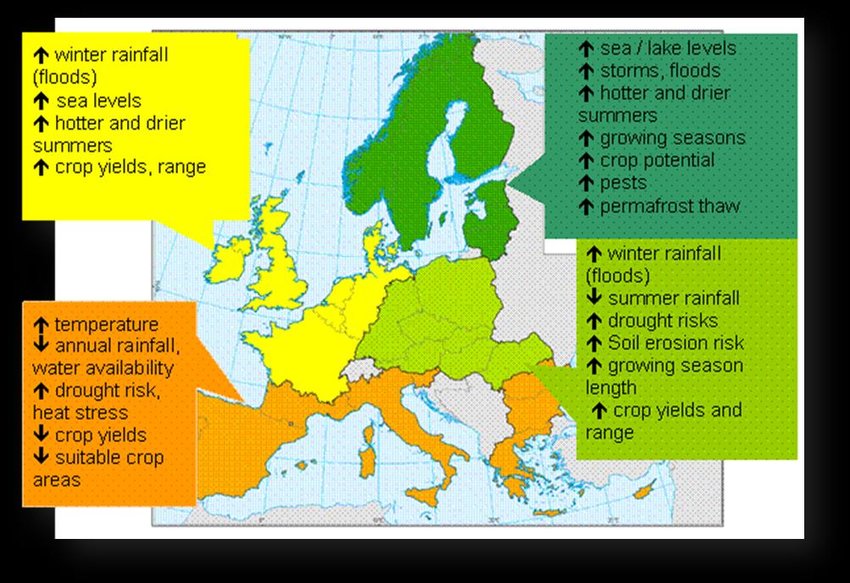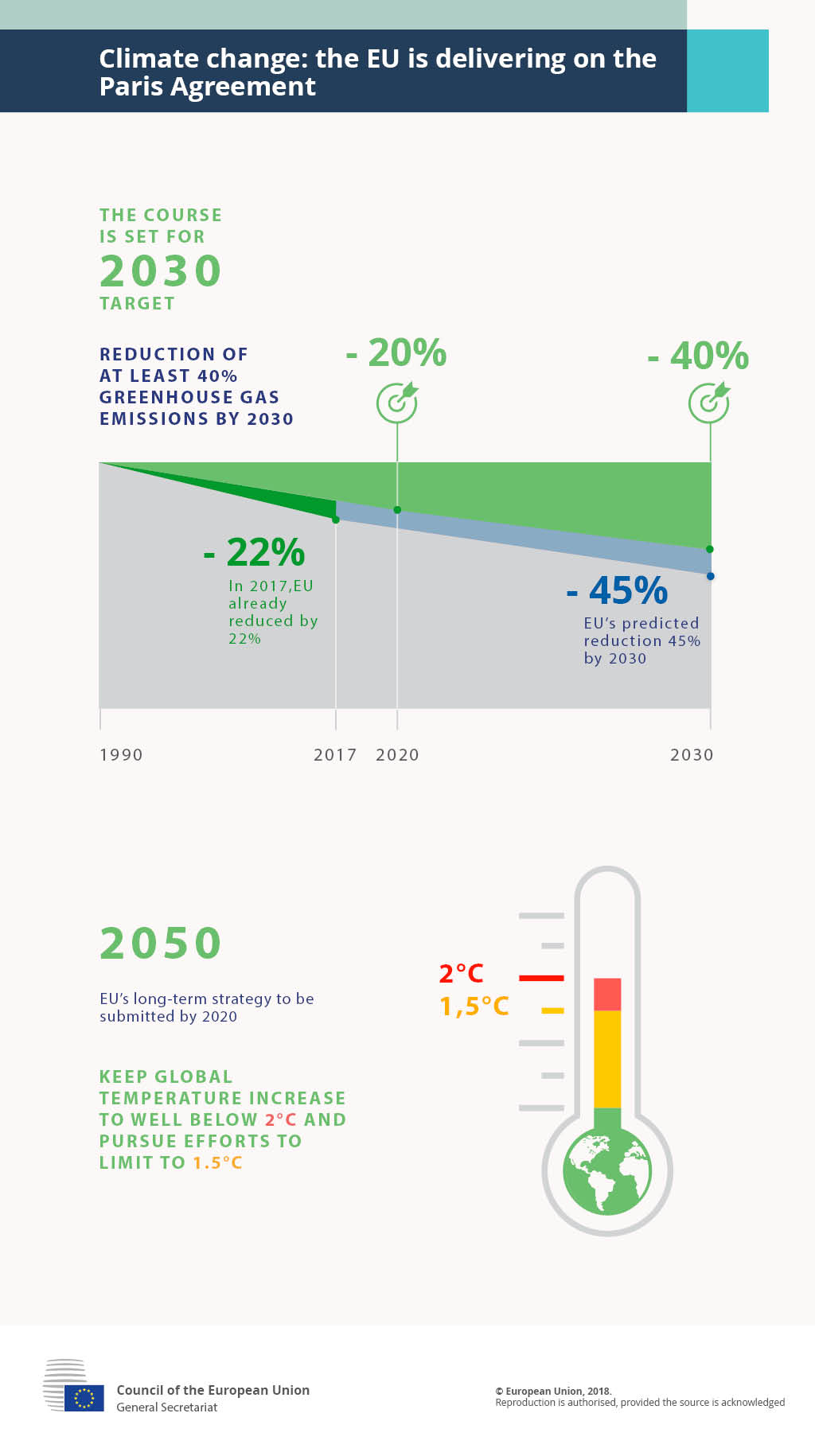When Paris agreement called for a universal reduction of emissions, the complete world began looking for ways to fight Climate change. Since then, European Union has always set its goals right and worked hard to achieve them at right pace.
By 2017 alone, the EU had succeeded in reducing its emissions by almost 22% compared to 1990 levels, thereby reaching the emission reduction target three years prior of its 2020 destined schedule.
But when the report-based calculations began falling-in, our well-structured Net-zero targets have failed to appear feasible any longer.
For instance, in order to limit the Global temperature to 1.5 degree C, at least 50% probability to accomplish this lies with capping the emissions to 480 bntn till 2039.
With the current rate of global emissions at 42 GtCO2eq, this capping will anyways be overflown in just upcoming 12 years.
In that scenario, if we look for EU to maintain the existing Carbon budget, it will have to achieve neutrality by 2033.
EU owes approx. $9.3 trillion (at the fair price of $30/tCO2) to the world in lieu of its emissions. In this light, EU had to work more to handle its share of emissions.
Therefore, it unveiled some of the world’s most ambitious proposals, under the name “Fit for 55”, aiming to negate carbon emissions and dissuade its 27 members to use the fossil fuels.
It is a complete roadmap to decrease Carbon emissions by 55% till 2030, compared with 1990 levels.
The focus of the European roadmap: Provisions under the Law
The plan aims to curb personal and commercial forms of transport particularly, across the communion. For example, combustion engine-based vehicles will no longer be manufactured from 2035 in EU.
Financial incentives will therefore be given to countries that will succeed in replacing the conventional fuel or non-renewables with more sustainable alternative, in sectors for aviation and maritime transportation.
Even the base rate for taxing the petrol, kerosene and gasoline fuels will be increased using considerable margins.
The proposition is to establish a carbon border around the bloc that will also exert tariffs on certain goods those will be produced outside the bloc, involving greater amount of Carbon and other GHG footprint.
Depending upon the products’ carbon footprint, EU will subject them to the similar standards excitingly been used and applied for goods produced within the EU.
This step will provide twin benefits to the policy-makers and environmentalist altogether. Manufacturers will be desisted from importing cheaper materials from countries with comparatively lower environmental standards.
While it will provide new opportunities and jobs within the region for residents of its own, amidst migration and other socio-economic threats.
Reflecting its serious efforts, EU has even placed a lower and tighter capping on the amounts of annual Carbon produced by its territorial emission companies under a mechanism known as ETS (Emissions Trading System).
ETS was introduced in 2005 to punish the companies emitting more than they are allowed. To produce more emissions surpassing the punishment involved, one has to buy “allowances” from others in the ETS where they trade unused allowances.
This seems like a perfect, concerted effort for the EU to be a guiding light for the World in dealing with climate change. But there are challenges abound to this high-spirited motive.
Challenges, shortcomings and Inconsiderate decision-making:
Not a Uniform Playing Field: The transition demanded by Brussels will not be easy to adapt to, by smaller, poorer nations in the bloc.
Other leader Nations can certainly achieve or maybe over-achieve their targets as they have been industrialized for long but certain nations are struggling with their strained economies already.
Divided, we fall: Years have passed since the Bloc came into existence but still there lies a significant trust deficit among member states.
It is seemingly politically difficult task to bring all member nations on the same page. Most of them are currently divided on various pan-European issues — ranging from rule of law to human rights to the perspectives of Climate change.
Targets afar from limiting global temperatures: Although Climate activists and experts have lauded these aims and they seem to be technologically feasible.
Yet these targets fall short of limiting the temperatures below 1.5 degree C, which is important to address Climate change.
A few pro-Bloc leaders have even claimed disregard as even if the EU becomes carbon neutral reducing its standard of life, the other countries, more appropriately major polluters, will be constantly emitting Carbon.
Taking precedent from the law:
Climate change may be biased in its initial approach but has more or less become a Universal problem. It is anticipated to even denigrate human lives more than ever.
The last two decades hosted 18 warmest years recorded ever. Extreme and weird weather events, engaging pandemics have become a bigger reality.
EU accounting for nearly 8% of global emissions, will at least provide something to start with, an inspiration or a life-changing experience.
In this changing scenario, it becomes global imperative to draw examples and begin addressing the threats of Climate change. We just need to act now because with current trends, even 5 degree C temperature rise is a possibility.
We cannot entertain irreparable damages anymore.





